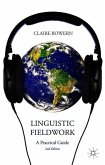According to neurolinguistics, the so-called "linguistic" convolutions of the brain, the Broca area and the Wernicke zone, are responsible for the faculty of speech. Relatively autonomous, they are connected by the arcuate beam, but they also communicate on one side with the motor centers, for phonation, and on the other hand with other cognitive functions, by encoding "structures" or "Relational objects", easy to manipulate in the process of their "labeling": semantic and emotional (axiologies), associative (ontologies) and inferential (causality). Since the discovery in 2009 by the Inserm team "Cerebral Imaging and Neurological Disabilities" of the "writing area" (known as the Exner zone), it is known that learning techniques such as writing, Reading, or drawing and music production can also be implemented in specific locations in the brain without the same type of organization as the linguistic zones. We will develop a "neuro-medial" hypothesis concerning the "media effect" that occurs in each process of learning and social transmission of media handling skills








